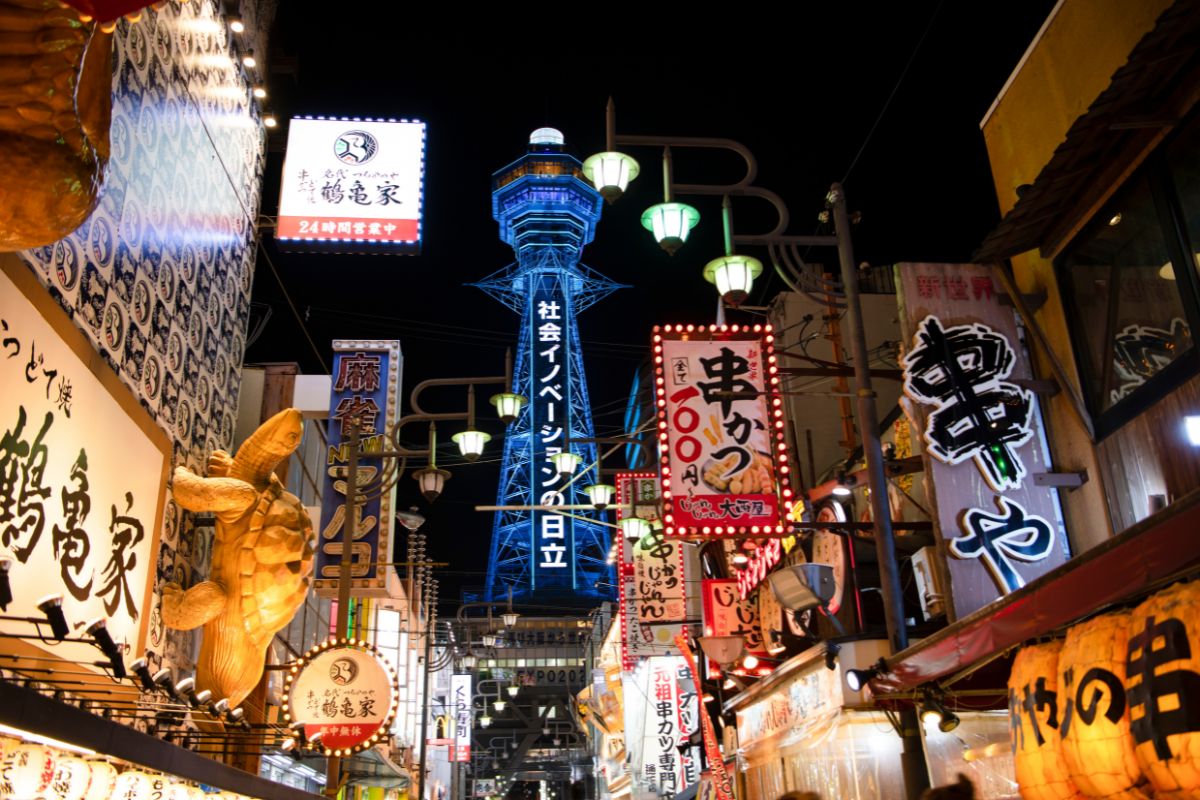Japan is a beautiful country that prides itself on its rich cultural heritage, and one of the best ways to experience this is through its vibrant markets. From bustling street markets selling local delicacies to traditional markets selling handmade crafts and souvenirs, Japan’s markets offer a peek into the daily life and traditions of the people of Japan.
Traditional markets in Japan, known as “shotengai” in Japanese, are an essential part of Japanese culture and history. These markets have been around for centuries and offer a unique glimpse into local life and traditions. They are filled with abundant local goods, from fresh seafood and produce to traditional crafts and clothing. Many of these markets have been passed down through generations and have become a significant part of their communities.
Whether you’re a seasoned traveller or visiting Japan for the first time, visiting the markets is an absolute must. Join us for a look at some of the best markets in Japan to experience local life and traditions.
Best Markets in Japan to Experience Local Life and Traditions
Get ready to immerse yourself in the vibrant heart of Japan as we explore its bustling markets.
Tsukiji Outer Market, Tokyo
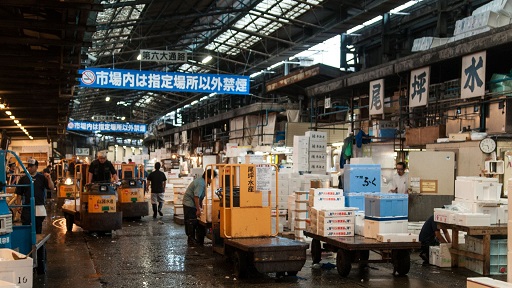
If you’re a seafood lover in Tokyo, visiting the Tsukiji Outer Market is essential. This bustling marketplace has been at the heart of Tokyo’s seafood trade for over 80 years and remains one of the city’s most famous tourist destinations.
Tsukiji Outer Market was built in the 1930s as an extension of Tsukiji Fish Market, the largest fish market in the world, and closed in 2018. Although the Inner Market, where the wholesale auctions took place, has since relocated to Toyosu, the Outer Market remains a vibrant hub of activity and commerce.
The market is a labyrinth of narrow streets and alleys, with vendors selling various seafood, produce, and kitchenware. However, seafood takes centre stage at Tsukiji Outer Market. From giant tuna to live octopus, the market offers an incredible array of fresh seafood that will delight any seafood lover.
The types of seafood sold at Tsukiji Outer Market vary depending on the season, but some of the most popular include tuna, salmon, eel, squid, and shellfish. The vendors take great pride in the quality of their products, and many offer samples to entice customers.
In addition to the fresh seafood, the market is also home to different food and drink stalls that offer a taste of Japanese cuisine. Some of the most recommended stalls include Sushidokoro Tachibana, which serves delicious sushi made with fresh, local seafood, and Kaisen-don Fukumaru, which offers generous bowls of rice topped with an assortment of seafood.
If you prefer a more relaxed and peaceful environment, the hustle and bustle of Tsukiji Outer Market may not be for you. It can be overwhelming for some visitors with large crowds and busy streets. However, despite the crowds, the atmosphere is lively and energetic, making it a must-visit destination for any seafood lover or market enthusiast.
Nishiki Market, Kyoto
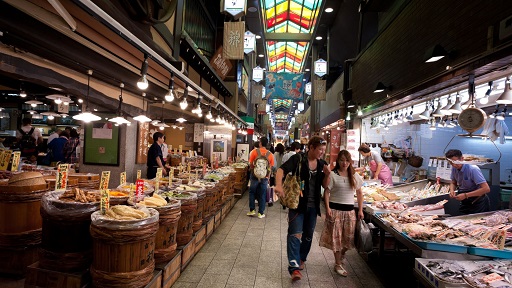
If you’re seeking a taste of traditional Kyoto, visiting Nishiki Market should be at the top of your list. This narrow, five-block-long shopping street has been a hub of activity for over 400 years, making it one of the oldest markets in Kyoto. The market is well-known with locals and tourists and a must for foodies.
The history and significance of Nishiki Market are closely tied to the development of Kyoto as a cultural and economic centre. Originally, the market was a hub for selling fresh seafood and vegetables. Over time, it grew to include various foodstuffs, including traditional Kyoto specialities such as pickles and wagashi or traditional sweets.
One of the unique features of Nishiki Market is the sheer variety of food and drink stalls available. Visitors can sample everything from fresh sashimi to grilled octopus and from Japanese tea to sake. Some popular food stalls include Konnamonja, which specialises in grilled skewers. You can also visit the renowned knife shop, Aritsugu, located in this market.
Don’t forget to visit one of the wagashi shops in the market if you have a sweet tooth. These traditional sweet shops offer a range of confections, from colourful mochi (rice cakes) to delicate dorayaki (sweet pancakes with red bean paste).
One potential downside of Nishiki Market is its tourist popularity, making it crowded at peak times. Additionally, some more popular stalls may have long lines, so it’s best to arrive early to beat the crowds.
Yanaka Ginza, Tokyo
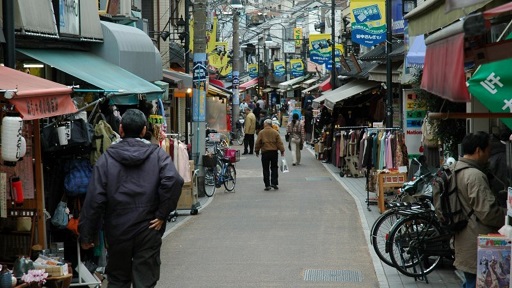
Located in the historic Yanaka district, the market offers a glimpse of old Tokyo and a chance to learn about the lives and traditions of the locals. Established in the 1950s, Yanaka Ginza has become popular among tourists and locals as a go-to destination. The market houses various shops and stalls selling handmade crafts, traditional snacks and other local products.
One of the highlights of Yanaka Ginza is the wide selection of handmade crafts available for purchase. From pottery to textiles, there’s something for every taste and budget. Many shops are run by artisans practising their craft for generations, making the market a unique and authentic shopping experience.
In addition to the handmade crafts, Yanaka Ginza is also known for its selection of traditional snacks. The market has shops selling wagashi, traditional Japanese sweets made from rice flour, red bean paste and other natural ingredients.
For those looking for a bite to eat, Yanaka Ginza has plenty of options. Several food stalls sell various Japanese street food, including yakitori (grilled chicken skewers), takoyaki (octopus balls), and more. The market is also home to several restaurants serving local dishes, such as ramen and udon noodles.
However, the Yanaka Ginza is a relatively small-sized marker. While it may be charming and authentic, it may not offer as extensive a selection of goods and food as larger markets. However, this can also be seen as an advantage for those seeking a more relaxed and intimate market experience.
Asaichi (Morning Markets), Hokkaido
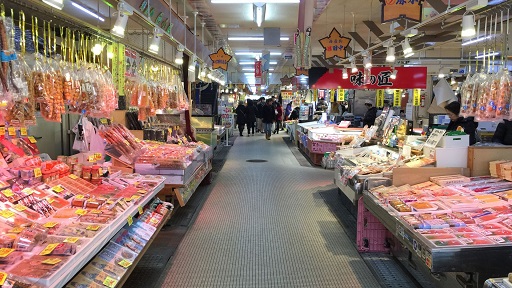
Asaichi, or morning markets, are an integral part of Hokkaido’s culture and a must-visit for anyone looking to experience the island’s culinary and agricultural traditions. The morning markets are typically held on weekends, allowing visitors to interact with local farmers, fishermen, and artisans.
The morning markets have a long history in Hokkaido, dating back to the late 19th century when farmers would gather to sell their produce to local residents in the early morning hours. Over time, the markets grew in size and popularity, and today they attract visitors from all over Japan and beyond.
One of the main attractions of the morning markets is the variety of fresh produce and seafood available. Visitors can expect to find a wide collection of seasonal fruits and vegetables, including melons, tomatoes, corn, and fresh seafood, such as crab, scallops, and salmon. The markets also offer a variety of prepared foods, including grilled seafood skewers, onigiri (rice balls), and sweets made with local ingredients like lavender and melon.
In addition to the food, the morning markets also feature a range of handcrafted souvenirs, including pottery, textiles, and wooden toys. Many of these items are made by local artisans using traditional techniques, adding to the cultural significance of the markets.
Some of the recommended stalls to visit at the Asaichi markets include the seafood vendors, who offer a variety of freshly caught fish and shellfish, as well as the fruit and vegetable stalls, which offer the best of Hokkaido’s seasonal produce.
One potential downside of the Asaichi (Morning Markets) in Hokkaido is their limited operating hours. As they are primarily morning markets, they tend to close early in the afternoon, so if you’re not an early riser, you may miss out on some of the best produce and seafood Hokkaido offers.
Toji Temple Flea Market, Kyoto
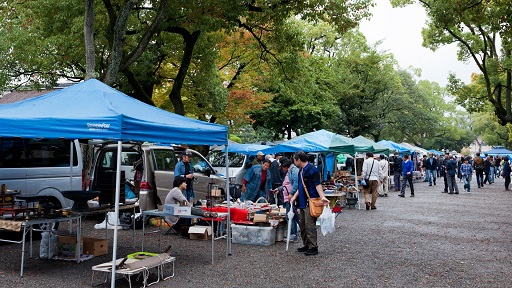
If you’re a fan of antiques and vintage items, a visit to Toji Temple Flea Market in Kyoto should definitely be on your Japan travel itinerary. This market, which takes place on the 21st of every month, is a treasure trove of unique and rare finds.
Toji Temple Flea Market has a long and rich history, dating back to the early Heian period (794-1185) when Toji Temple was established as a centre for Buddhist learning and culture. The market began as a way for local residents to sell goods and produce to visiting pilgrims and has since grown into a popular attraction for both locals and tourists.
One of the main draws of the Toji Temple Flea Market is the incredible array of antiques and vintage items on offer. From traditional Japanese ceramics and pottery to vintage kimono fabric and antique furniture, there is no shortage of fascinating finds to be discovered. There are plenty of unique and one-of-a-kind items for sale in Yanaka Ginza, making it an excellent place to find the perfect souvenir or gift.
In addition to antiques and vintage items, the market also offers a variety of handicrafts and artisanal goods. You can find everything from handcrafted jewellery and textiles to woodcarvings and traditional Japanese toys. The market is also great to sample local food and drink, with vendors selling everything from fresh produce and seafood to street food and sake.
As with any flea market, the key to a successful visit to Toji Temple Flea Market is to arrive early and be prepared to spend some time browsing. Some recommended stalls to check out include antique textiles and kimonos, vintage pottery and ceramics, and traditional Japanese crafts such as woodblock prints and lacquerware.
One potential downside of the Toji Temple Flea Market is its popularity, which can make for crowded conditions and difficulty navigating the stalls. Additionally, some items for sale may be priced higher than you would find at other flea markets or antique shops.
Ameyoko Market, Tokyo
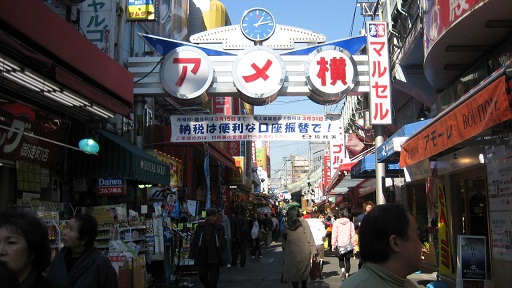
This lively market has been around since the post-war period II and is a vibrant meeting place for locals and tourists alike. Ameyoko Market, short for Ameya Yokocho (meaning “Candy Shop Alley”), can be found in the Ueno district and is conveniently reachable by public transportation.
The market’s history can be traced back to the black market days when American soldiers sold goods to the locals after the war. Today, the market is a bustling shopping destination that offers a remarkable blend of Japanese and international products.
The street vendors at the market offer a wide range of products to satisfy any shopaholic. Clothing, accessories, cosmetics, electronics and fresh produce are just some items you can find here.
When it comes to food and drink, Ameyoko Market is a foodie’s paradise. Many food stalls and small restaurants serve various dishes, including sushi, grilled seafood and traditional Japanese snacks such as takoyaki and okonomiyaki. Several drink stalls also sell refreshing drinks such as bubble tea and freshly squeezed fruit juice.
A food stall worth checking out is the Umezono mochi shop, which has served customers for over 160 years. They offer a variety of traditional Japanese sweets, including their signature Kuzumochi, a jelly-like sweet made from kudzu starch. Another popular food stall is the Kushikatsu Daruma, which serves delicious deep-fried skewers of meat and vegetables.
Although Ameyoko Market offers a unique shopping experience, one potential downside is its popularity and crowds. Due to its central location and affordable prices, the market can get crowded, especially on weekends and during peak tourist season. Moving through the busy aisles can be overwhelming, and you may spend more time queuing than shopping.
Takayama Morning Market, Takayama
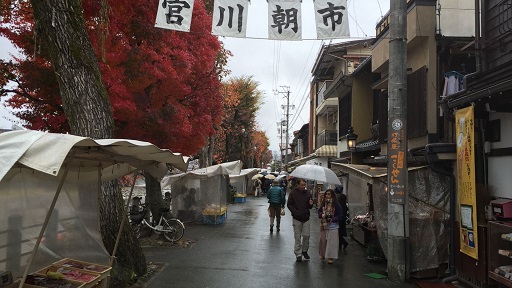
Takayama Morning Market is one of Japan’s most charming and picturesque markets. The market’s history dates back to the Edo period and is integral to Takayama’s cultural heritage. The market is held in two locations, Miyagawa Market and Jinya-mae Market, and attracts locals and tourists alike.
One of the specialities of the Takayama Morning Market is the local produce, such as Hida beef, fresh vegetables and fruit. There are stalls selling various pickles, sauces, miso paste, and the traditional sweets manju.
In addition to the delicious food offerings, the Takayama Morning Market is known for its handicrafts, including handmade pottery, wooden crafts, and traditional textiles. You can also find souvenirs such as magnets, keychains, and postcards to take home with you.
When it comes to food and drink, you can find a variety of local specialities such as mitarashi dango (sweet rice dumplings), yakitori (grilled chicken skewers), and Hida beef sushi. You can also enjoy a cup of hot Amazake, a sweet, low-alcohol fermented rice drink perfect for colder weather.
The Takayama Morning Market is also a great place to experience the local culture and interact with friendly locals. The market is bustling with energy and offers a vibrant atmosphere that is perfect for soaking up the charm of Takayama.
One possible disadvantage of the Takayama Morning Market is that it can be overcrowded, especially during the peak tourist season. Additionally, some stalls may have limited English signage or language support, so bringing a translation app or brushing up on some basic Japanese phrases may be helpful before visiting.
Nijo Market, Sapporo
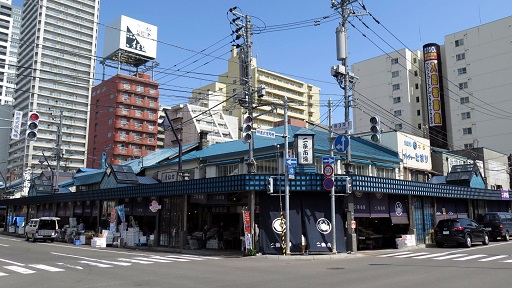
Located in the heart of Sapporo, the Nijo Market has been a bustling marketplace hub for fresh seafood and local produce for over a century. The market is steeped in history and is a beloved part of Sapporo’s culinary culture.
This market was established in 1905 and has since become a centre for Hokkaido’s seafood industry. More than 60 vendors offer a variety of fresh seafood, such as salmon, scallops and crab. In addition to seafood, the market also offers a wide selection of regional produce, such as melons, corn, and potatoes.
One of the most popular stalls at Nijo Market is the Kaisendon (seafood rice bowl) stall, where customers can choose from various fresh seafood to top their rice bowl. Besides the Umezono mochi shop, we highly recommend a few other stalls. First, the grilled scallop stall is a must-visit for fresh and perfectly prepared Hokkaido scallops. Second, the crab stall for delicious crab dishes such as grilled crab and crab miso soup.
The market is not only a destination for foodies but also for those interested in the region’s history and culture. Visitors can learn about the history of Hokkaido’s fishing industry at the Nijo Market Museum, which features exhibits on the region’s seafood production and traditional fishing methods.
While Nijo Market offers a delightful shopping and dining experience, it may not be ideal for those seeking a quieter and more intimate atmosphere. The market can become quite crowded, especially during peak tourist seasons, which can overwhelm some visitors.
Conclusion
Japan’s markets offer a vibrant and authentic glimpse into local life and traditions. From the bustling seafood markets of Tsukiji and Nishiki to the antique stalls of Toji Temple Flea Market and the unique handicrafts of Yanaka Ginza, there’s something for everyone.
These markets offer not only the chance to sample delicious regional specialities but also the chance to interact with locals and learn about Japan’s rich cultural heritage. Whether you’re a foodie, a history buff, or just looking for a unique shopping experience, include these markets in your Japan itinerary for an unforgettable trip.

